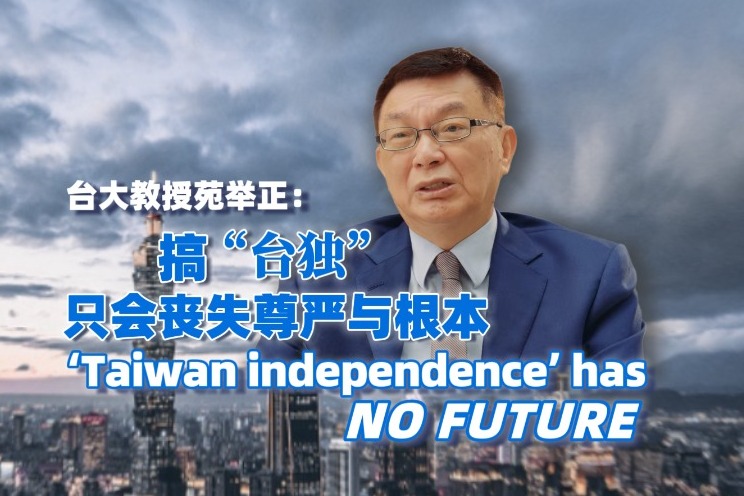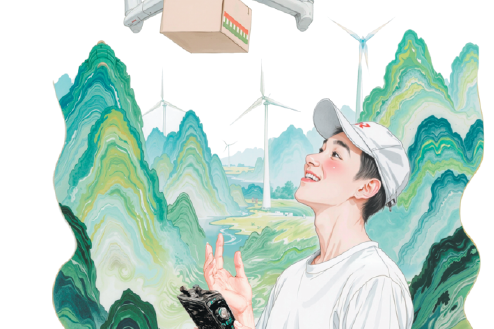Myths of China's global inflation, deflation risks


In early spring, international pundits portrayed China’s reopening as a global inflation risk. Today, it is depicted as a global deflation risk. Both narratives are myths. Rebound can take time but it is on its way.
In June, China's consumer prices stayed close to zero, falling behind the 0.2 percent rise in May, according to China’s National Bureau of Statistics. In international media, that was quickly reported as an “unexpected flattening”, and defined as “deflation”.
Barely half a year ago, the same voices that now present China as a global deflation risk were portraying China as a global inflation risk – a concern that itself proved, well, inflated.
The myth of China as a global inflation risk
When Chinese policymakers began to reopen the economy early in the year, many international observers warned it would unleash inflationary headwinds. Here’s what the pundits assumed would happen: As the world’s biggest factory and the second-largest economy opened for business after three COVID years, they thought it would face an inflationary surge in demand. That, they said, would spark global inflationary pressures.
In other words, the pundits thought China's reopening would be a déjà vu of what had happened in the United States and the eurozone. After all, the two had been struggling with elevated inflation ever since their re-opening.
There was only one problem with that narrative: Numbers didn’t back it up.
Despite Western media hysteria in early spring, China's annual inflation rate rose to only 2.1 percent in January. Expectedly, prices of food jumped and those of non-food gained on the back of the Lunar New Year festival and the removal of pandemic measures.
Nonetheless, China’s inflation rate was only half relative to Japan, a third compared with the US and a fourth compared with the eurozone.
China as the great global inflation risk turned out to be just a myth.
The myth of China as a global deflation risk
In June, the Chinese inflation rate was flat. According to international pundits, this meant that China was facing an impending deflationary crash, or as they headlined:
“China on brink of consumer deflation” (Financial Times),
“China's deflation pressure builds as consumer prices falter” (Reuters),
“Deflation looms in China as rebound loses steam” (Wall Street Journal).
But is China really a global deflation risk? That presumes that Chinese price levels reflect a sustained fall (rather than sustained increase as in inflation), and that such deflation is somehow exported worldwide in a sustained manner.
Here's the problem: Sometimes simple headlines can illustrate complex realities. But when they represent simplistic generalizations, they misinform rather than enlighten.
Most pertinently, they do not explain why some inflation components are slowing, others remain flat and still others are actually increasing.
June data heralds rebound in fall
In fact, the June data is not unambiguous. The Consumer Price Index (CPI), a main gauge of inflation, is an aggregate figure with several components. But not every component is telling the same story.
The June data was the lowest reading since February 2021, but that was mainly due to a decline in non-food prices (-0.6 percent vs flat in May) with cost of transport falling further (-6.5 percent vs -3.9 percent), while that of education actually slowed (1.5 percent vs 1.7 percent).
Moreover, inflation was stable for health (at 1.1 percent), whereas prices of housing were unchanged after declining 0.2 percent previously. Despite a sharp fall in pork prices, food prices actually rose the most in three months (2.3 percent vs 1.0 percent) due to the cost rebound in fresh vegetables and eggs. Furthermore, fuel price disinflation, a key factor behind subdued headline inflation, is likely to wane over the coming months.
In brief, price levels are not deflating. But since general price levels are not decreasing (and certainly not globalizing), what do these price developments mean?
Uncertain times, cost-conscious consumption
China’s e-commerce revolution exploded well before the COVID. But even after the pandemic, many cost-conscious consumers like their e-com promotions and discounts. New technologies support new consumption patterns, but so do the times.
After three years of COVID constraints, many consumers are cautious and may be changing. They are no longer returning to old purchasing patterns. They don’t purchase what they want; they buy what they need.
After the recent Dragon Boat Festival, marketers noticed that domestic tourist traffic soared 113 percent more than in the pre-pandemic 2019. Yet, tourism revenue, which proved very strong at 95 percent, fell behind the traffic- by almost a fifth. Consumers want to see new sights, but they are more cautious about buying into such things.
The same lesson explains why gains in food and beverage (F&B) sales in the first five months of the year proved strong, whereas clothing and cosmetics fell or was stagnant. Chinese consumers need to eat and drink, but in uncertain times we all are more discriminate with what and where they eat and drink.
Rebound on the way
In China, there is broad expectation for a slate of measures from the Politburo meeting later in July, when the authorities will review the economic performance in the first half of the year. These measures are likely to be coupled by new fiscal and monetary support.
On last Tuesday, Chinese President Xi Jinping promoted efforts to lift the country's opening-up to a new level. That’s a prelude of things to come.
Last Friday, Liu Guoqiang, vice-governor of the People's Bank of China, said that inflation is anticipated to remain weak in July, but is expected to pick up in August and maintain a growth rate close to 1 percent by the end of this year. Consumption and economic recovery after a pandemic could take about a year to return to normal.
Inflation and deflation stories aside, China’s economic recovery is likely to strengthen in the second half of the year.
Dan Steinbock is an internationally recognized strategist of the multipolar world and the founder of Difference Group. He has served at the India, China and America Institute (USA), Shanghai Institutes for International Studies (China) and the EU Center (Singapore).
































